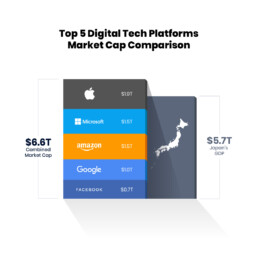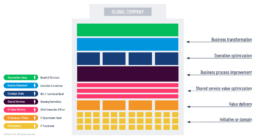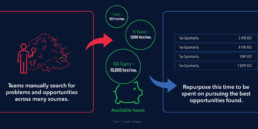If you’re not focused on penetrating enterprise accounts, you’re leaving serious amounts of money on the table. The scale of each company that makes up Forbes Global 2000 is enormous.
Did you know that when it comes to the Top 100 companies listed on Forbes Global 2000:
- On average, they generate 10x the revenue than the other 1,900 companies on the list ($140B vs. $14.1B)
- On average, they allocate roughly 8x more to SG&A than the other 1,900 companies on the list ($15B vs. $1.9B)
The 1,900 companies that constitute the balance of the Global 2000 list also have enormous significance. When added to the Top 100, they generate half of the world’s GDP. Landing (or losing) just one of these “white whales” can make (or break) your year.
In fact, the market capitalizations of the largest public companies are quickly becoming larger than the GDP of most countries on the planet. They’re massive markets in and of themselves.
- 69 of the richest 100 economic entities on the planet are corporations, not governments*
- 157 of top 200 economic entities by revenue are corporations, not countries*
- The market cap of the top 5 digital technology platforms exceeds the entire GDP of Japan, the 3rd largest country in the world

You can essentially take half of the world’s economic output ($41T), and allocate that against the Global 2000. Add in the top private companies and government entities and you can see the outsized spend (as in 80 percent or more of all spend) of these specific entities compared to the rest of businesses around the world.
So why aren’t we spending more time mining these companies that spend the most? Why do we spend most of our time on market analysis instead of customer analysis?
If the goal is to sell as many customers as possible, you probably don’t need to change your tactics. However, if the goal is to drive revenue efficiently, which will increase price to sale (P/S) or price to earnings (P/E) ratios, which in turn will increase market cap and shareholder value, you’ll need a strategy that focuses on enterprise account growth.
How to Acquire Enterprise Accounts
Given the size of enterprise accounts, companies must be prepared to navigate the complex agreement networks that exist within each of these large corporations. Buying decisions made by these organizations are typically done by networks of employees who are from different departments and who have different objectives, goals, and ideas.
The conversations your sales reps are having on the first floor (initiative or domain) are going to be very different from the conversations they have with those who occupy the offices on the 50th floor (operation optimization and business transformations). And because today’s sales teams aren’t equipped to sell outcomes effectively, most sales efforts stay stuck on the first floor, reinforcing procurement-driven, low cost purchasing opportunities. Trying to sell a C-Suite executive at an enterprise account a low-level product offering for $50k isn’t going to cut it at their altitude level when their focus is to add another $500,000,000 in market capitalization this year.

In order to move past the first floor and successfully sell within large enterprise accounts, companies today need a “go to customer” vs. “go to market” strategy. Afterall, markets don’t write checks, customers do.
The first thing companies must do is work backwards from customers. They need to determine a clear vision for customers based on business outcomes while also identifying the areas of interest at the higher executive levels. Then you can frame the bigger picture, plot your growth strategies by relationship type and altitude level, and begin a go-to-customer journey that drives broad, expansive enterprise account relationships and increases investment for the long term.
Stay tuned for more insights from our Economy of Enterprise Accounts series.
*Source: GlobalJustice.org.uk
Dave Irwin
Founder + CEO of Polaris I/O
Dave has 30 years of experience in B2B as President, GM, CMO, and CSO. He is recognized as an AI, marketing, and sales enablement expert. He is also a growth leader with a strong history of innovation.



